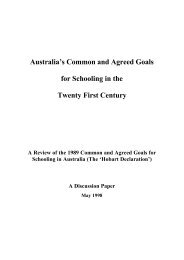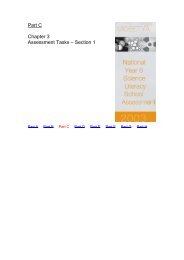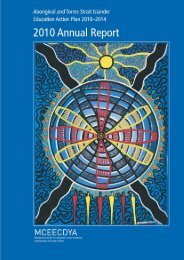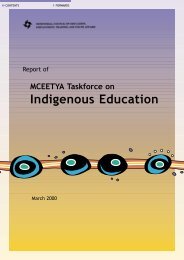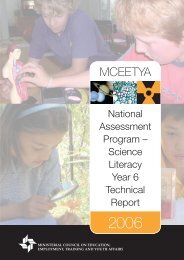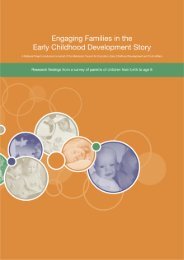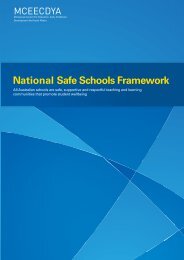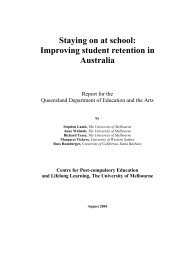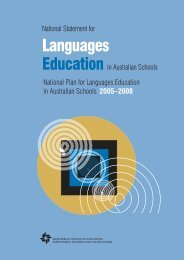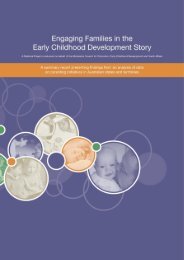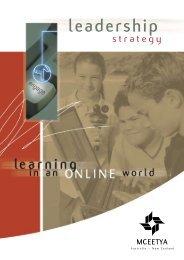Science Literacy 2006 school release materials - NAP
Science Literacy 2006 school release materials - NAP
Science Literacy 2006 school release materials - NAP
Create successful ePaper yourself
Turn your PDF publications into a flip-book with our unique Google optimized e-Paper software.
gathering evidence through measurement and observation; and making recordsof data in the form of descriptions, drawings, tables and graphs using a range ofinformation and communications technologies.Strand B: Interpreting evidence and drawing conclusions from their own orothers’ data, critiquing the trustworthiness of evidence and claims made by others,and communicating findings.This process strand includes identifying, describing and explaining the patternsand relationships between variables in scientific data; drawing conclusions thatare evidence-based and related to the questions or hypotheses posed; critiquingthe trustworthiness of evidence and claims made by others; and communicatingfindings using a range of scientific genres and information and communicationstechnologies.Strand C: Using science understandings for describing and explaining naturalphenomena, and for interpreting reports about phenomena.This conceptual strand includes demonstrating conceptual understandings bybeing able to describe, explain and make sense of natural phenomena; understandand interpret reports (e.g. TV documentaries, newspaper or magazine articles orconversations) related to scientific matters; and make decisions about scientificmatters in students’ own lives which may involve some consideration of social,environmental and economic costs and benefits.Scientific literacy has been described here in three strands to facilitate theinterpretation of student responses to assessment tasks. However, authentictasks should require students to apply concepts and processes together to addressproblems set in real-world contexts. These tasks may involve ethical decisionmaking about scientific matters in students’ own lives and some consideration ofsocial, environmental and economic costs and benefits.The scientific literacy progress map describes progression in six levels from 1 to 6in terms of three aspects:• increasing complexity, from explanations that involve one aspect to severalaspects, through to relationships between aspects of a phenomenon• progression from explanations that refer to and are limited to directlyexperienced phenomena (concrete) to explanations that go beyond what can beobserved directly and involve abstract scientific concepts (abstract)• progression from descriptions of ‘what’ happened in terms of objectsand events, to explanations of ‘how’ it happened in terms of processes, toexplanations of ‘why’ it happened in terms of science concepts.The process strands (Strands A and B) are based on the Western Australianand Victorian assessment profiles, as these most clearly describe these learningoutcomes.59




